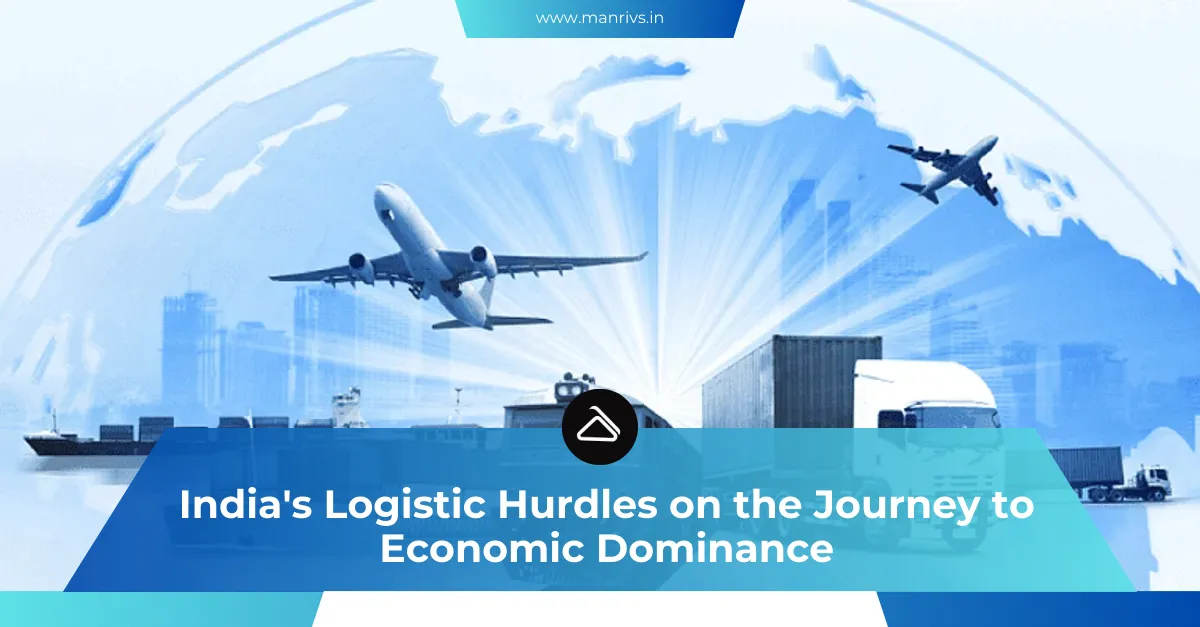The Indian logistics system is in a state of disarray, but our rival neighbour China has already established dominance, leaving India lagging behind – the logistical superpower of the country. In this article will delve into the reasons behind this logistical nightmare, its consequences for India’s growth prospects, and the steps being taken to rectify the situation.
In recent years, India has emerged as a formidable player on the global economic stage. While it currently holds the position of the 5th largest economy in the world, its ambitions reach even higher. For the past five years, India has been diligently striving to compete with the economic giant, China. Whenever the topic of this rivalry arises, Indian media often highlights the contrasting demographics: China’s aging population versus India’s youthful one. The narrative perpetuates the dream that India will eventually outpace the Chinese economy in the coming decades.
Understanding the Logistical Quagmire
Oversaturation of Rail Transport: One of the primary culprits contributing to India’s logistical woes is the oversaturation of its rail transport system. With a load capacity exceeding its limits, the rail lines struggle to accommodate both passenger and freight trains. Inevitably, passenger trains are prioritized, often causing freight trains to come to a halt for days at remote stations. This results in erratic schedules and sluggish speeds, with Indian freight trains averaging just 25 kilometers per hour.
Capital Rotation: Capital rotation plays a pivotal role in business profitability. The speed at which capital can be reinvested in the business cycle significantly impacts a company’s bottom line. To illustrate the point, let’s consider two traders, one from India and one from China, both selling identical products. However, due to the difference in freight speeds, the Chinese trader completes 263 cycles per year, making an annual profit of 5.26 billion dollars, whereas the Indian trader manages only 146 cycles, yielding a profit of 2.92 billion dollars. This disparity in profits can lead to price advantages for Chinese products in international markets.
Road Dominance Over Rail: India’s overreliance on road transport exacerbates the problem. The share of road transport has surged, with 74% of goods now being moved by road, compared to 26% by rail. In contrast, developed nations prioritize rail transport, which is not only cost-effective but also environmentally friendly. Trucks emit six times more CO2 per kilometer compared to trains, and this could pose future challenges as carbon taxes gain traction globally.
The Dawn of Dedicated Freight Corridors
To address these issues and boost India’s logistical efficiency, the government has launched a game-changing initiative known as Dedicated Freight Corridors. This ambitious railway project aims to create six specialized lanes across the country exclusively for cargo trains, eliminating interference from passenger trains. The first corridor, spanning from Haryana to Maharashtra, is already under construction, with the second connecting Punjab to West Bengal. These corridors will connect India’s heartland to major ports like JNPT, Vijayawada, and Kolkata.
The dedicated freight corridors come with several key benefits:
- Increased Rail Share: These corridors are expected to increase the share of rail transport to 44% by 2051.
- Accelerated Export Cycles: Faster freight movement will lead to shorter export cycles for manufacturers.
- Cost Reduction: Rail transport is 83% cheaper than road transport, reducing overall transportation costs.
- Environmental Benefits: Lower CO2 emissions from trains contribute to a more sustainable transportation system.
- Decongested Roads: Reduced road congestion leads to smoother traffic flow along highways.
Challenges and the Way Forward
Despite the promise of dedicated freight corridors, several challenges loom on the horizon:
- Delays: The project has faced multiple delays, pushing up its estimated cost from 21,140 crores to 95,038 crores.
- Slow Implementation: The construction rate of just 600 meters of rail per day pales in comparison to the 37 kilometers of roads built daily.
- Global Technological Advancements: While India lags, China has already introduced a high-speed freight train with a maximum speed of 350 kilometers per hour and expanded its railway networks internationally.
In conclusion, India’s logistics infrastructure is at a crucial juncture. While the dedicated freight corridors hold the promise of transforming the nation’s logistics landscape, their success hinges on efficient execution. India’s ascent to economic supremacy is within reach, but overcoming logistical challenges is an imperative step on this journey.
FAQs
-
What are dedicated freight corridors, and how will they benefit India’s logistics?
Dedicated freight corridors are specialized railway lanes exclusively for cargo trains. They will increase the share of rail transport, accelerate export cycles, reduce costs, and offer environmental advantages.
-
Why is rail transport more environmentally friendly than road transport?
Trains emit significantly less CO2 per kilometer than trucks, making them a more sustainable option for transporting goods.
-
How do logistical challenges impact India’s economic growth?
Logistical challenges, such as slow freight speeds and high transportation costs, hinder economic growth by reducing efficiency and competitiveness in global markets.
-
What is the current status of the dedicated freight corridor project?
The project has faced delays and cost overruns, but some corridors are under construction, aiming to revolutionize India’s logistics.
-
How can citizens contribute to the success of infrastructure projects like dedicated freight corridors?
Citizens can demand accountability from policymakers and support efficient execution to ensure that infrastructure projects deliver their promised benefits.

